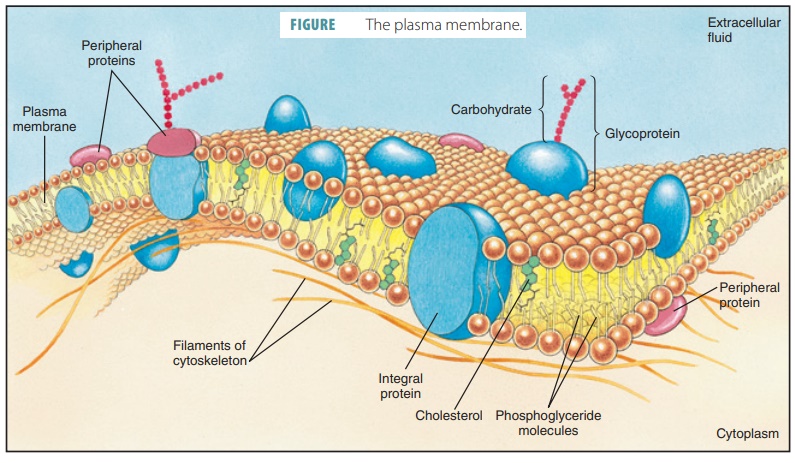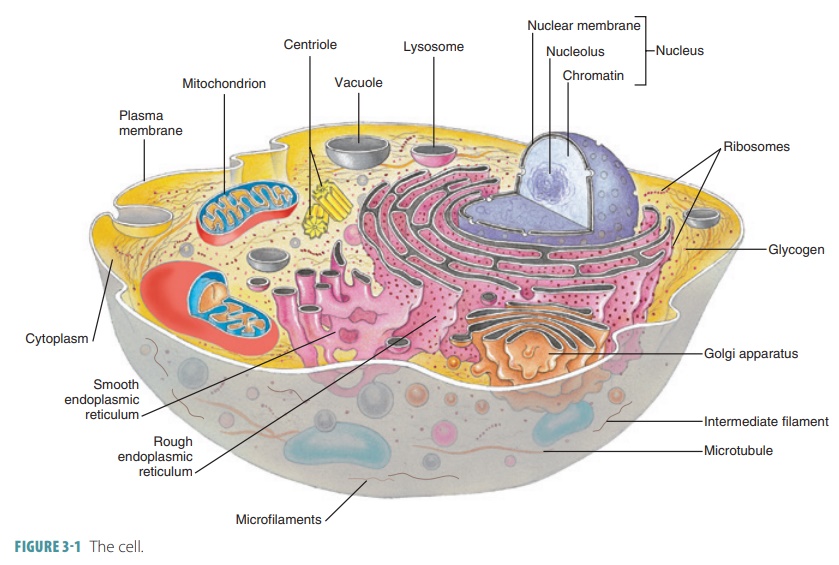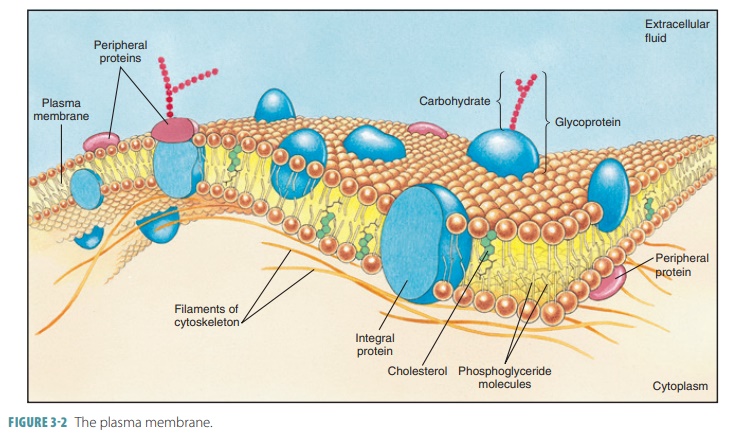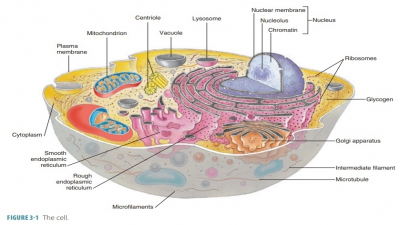Cell Membrane - Structure of the Cell
| Home | | Anatomy and Physiology | | Anatomy and Physiology Health Education (APHE) |Chapter: Anatomy and Physiology for Health Professionals: Levels of Organization : Cells
The human body contains two general classes of cells: sex cells and somatic cells. Sex cells (also called germcells or reproductive cells) are either the sperm of malesor the oocytes of females.

Structure of
the Cell
The human body contains two
general classes of cells: sex cells and somatic cells. Sex cells (also
called germcells or reproductive cells) are either the
sperm of malesor the oocytes of females. Somatic
cells (derived from the term soma, meaning “body”) include all other
cells in the human body. This chapter focuses on somatic cells.
The three major parts to a cell
are the cell mem-brane, the nucleus, and the cytoplasm. The cell membrane
encloses the cell, its nucleus, various organelles, and its cytoplasm. The
nucleus contains the cell’s genetic material and controls its activities. The
cytoplasm fills out the cell and its shape. Organ-elles are microscopic,
specialized cell structures that perform specific functions required by the
cell (FIGURE 3-1 ). The organelles fulfil functions and pro-cesses that are vital to the
life of cells, tissues, and organisms.

Cell Membrane
The cell
membrane (also called the plasma membrane) controls movement of
substances both intoand out of the cell. The cell membrane allows selective
communication between the intracellular and extracellular compartments while
aiding in cellular movement. It gives form to the cell and is also where much
of the cell’s biological activities are conducted. Molecules in the cell
membrane form pathways that allow the signals from outside the cell to be
detected and transmitted inside. When cells form tissues, the cell membrane
assists by adhering the cell to other cells.
Each cell’s membrane is extremely
thin and delicate, able to stretch to differing degrees. There are usually tiny
folds on the surface, which help to increase its surface area. Only certain
substances can enter or leave each cell (a condition known as selectivepermeability). Cell membranes
can be differentiallypermeable or semipermeable. A semipermeable membrane allows certain elements to pass through but
not others.
Lipids and proteins are the
primary substances that make up cell membranes, usually in a double layer of
phospholipid molecules (FIGURE 3-2). The phosphate portion forms the outer surface, with the fatty acid
portion forming the inner surface. Sub-stances such as oxygen and carbon
dioxide, which are soluble in lipids, can easily pass through this double layer
(also called a bilayer). Other
substances such as amino acids, proteins, nucleic acids, certain ions, and
sugars cannot pass through this layer. Cholesterol in the inner cell membrane
helps to keep the membrane stable. The phospholipids organize themselvesin a
bilayer to hide their hydrophobic tail regions and expose the hydrophilic
regions to water. This process does not require energy and forms a layer that
is the wall between the inside and outside the cell.

The proteins in a cell membrane
are classified according to where they are positioned. They also may have
different shapes such as fibrous, globular, or rodlike. Proteins can move in
the cell membrane because they are enclosed in an oily background. Cell
membrane proteins may form receptors for hormones or growth factors, transport
substances across the cell membrane, and form selective channels that
deter-mine which types of ions can enter or leave the cell. On the cell
membrane’s outer surface, proteins may extend outward, marking the cell as a
component of a particular tissue or organ. Many proteins are attached to
carbohydrates to form glycoproteins.
1. Name
the three major parts of a cell and the function of the cell membrane.
2. Explain
how a semipermeable cell membrane functions.
Related Topics


